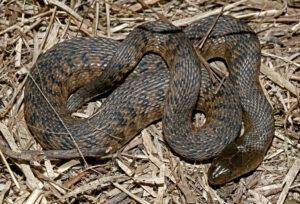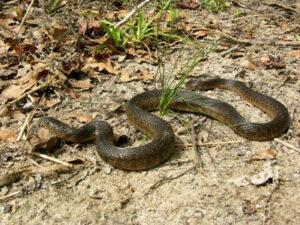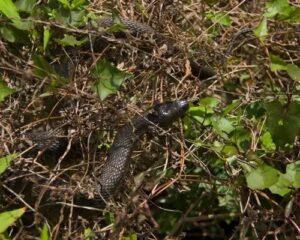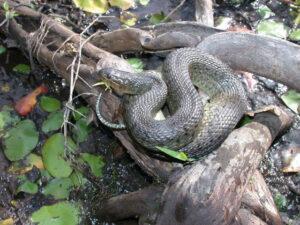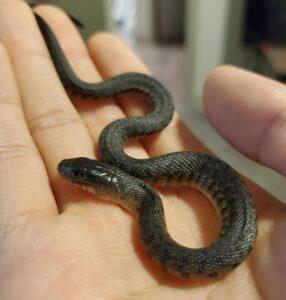The Florida green water snake or eastern green water snake is the biggest water snake in North America. The stout-bodied colubrid is often mistaken for the venomous cottonmouth and the harmless Mississippi green water snake. It has no distinctive markings on its greenish or brownish body.
Scientific Classifications
- Suborder:Serpentes
- Family:Colubridae
- Genus:Nerodia
- Species:N. floridana
Conservation Status
Description
Size
The fully-grown snake reaches a length of about 30-55 inches (76-140 cm). The largest recorded size of an individual of this species is 74 inches (188 cm).
Color and Appearance
Its color is greenish-brownish or solid gray with a yellow or white belly that darkens in color under the tail. A row of scales, separate from the upper lip scales, encircles the lower half of the eye. This feature differentiates it from all the other southeastern US snakes. The juveniles have around 50 dark crossbars running down the back and the sides that slowly fade with age. Its head is large, and scales are keeled.
Are They Dangerous to Humans
The Florida green water snake is not aggressive and avoids direct contact with humans. When it feels threatened, it impulsively tries to escape. If captured, it readily bites or releases a strong, foul-smelling musk from a pair of glands located at the base of its tail. But its bite is not dangerous.
Florida Green Water Snakes at a Glance
Distribution
It can be found throughout Florida, southern South Carolina, and parts of southern Georgia.
Habitat
The colubrid inhabits open, marshy wetlands as it prefers choked vegetation and calm waters like that in marshes and swamps. It is commonly found in ponds, lakes, ditches, and occasionally brackish water. But it rarely occurs in streams and rivers.
It is active all year round except for the snakes in the northern, coldest parts of its range that brumate (hibernate) in winter. In the other parts, it basks on sunny days. In the rainy season, it can be found traveling over land, which can be attributed to its death by the thousands earning it the status of ‘state emperilled’ in Georgia and South Carolina.
Predators
Its most common predators include hawks, river otters, ospreys, herons, egrets, kingsnakes, alligators, turtles, and several types of predatory fish.
Diet
Its diet primarily consists of fish, including crappies, sunfish, and small bass. Frogs, especially tadpoles, pig frogs, and salamanders, are also eaten. It swallows its prey alive.
Reproduction
Ovoviviparous (gives birth to live young from eggs that hatch inside the body)
It mates in late winter or early spring. The young are born in litter sizes of 20-40 from June to September. The largest recorded litter size is 132. Due to the large sizes of the litters, most juveniles never reach adulthood as predators take them.
Similar Species
Cottonmouth
The venomous cottonmouth or water moccasin, Agkistrodon piscivorus, has vertically elliptical pupils like a cat, while the Florida green water snake has round pupils. Cottonmouths are thicker too.
Green Water Snake
The green water snake, Nerodia cyclopion, has a darker belly that is marked with semicircular patterns.
Source
live.staticflickr.com, linodeobjects.com, reddit.com, ufwildlife.ifas.ufl.edu, discoverlife.org

